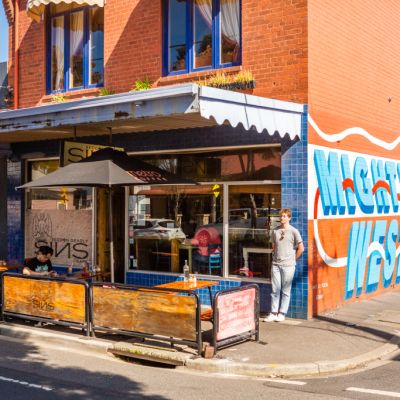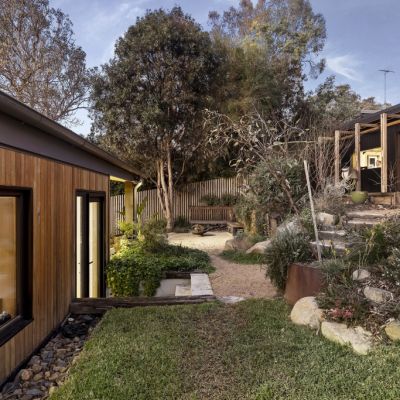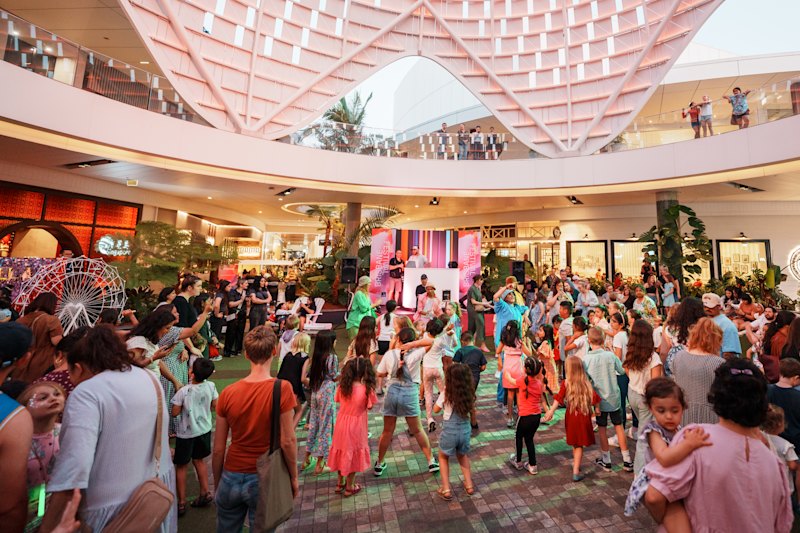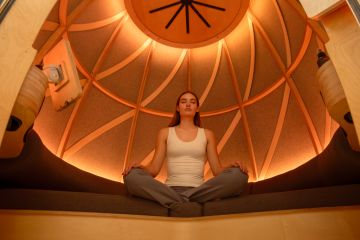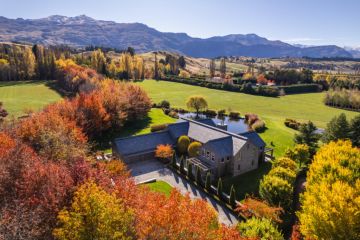How to renovate a heritage home in Australia

Renovating a historic home comes with the stresses only a well-aged building can provide. Yet, something about those high ceilings, tall windows, ornate cornices and creaky old floorboards can give you the butterflies like no other reno can.
“Old homes bear the stamps of craftsman past, so each one is different and often very playful,” agrees Monique Woodward of Wowowa Architecture. “Renovating one for contemporary living is an opportunity for true delight.”
Here, two heritage homes are reimagined in entirely different ways, perfectly marrying traditional design with modern sensibilities.
Bona Vista house
In Sydney’s Haberfield, this home gives a nostalgic nod to the early 1930s. After falling into disrepair, architect Eva-Marie Prineas from Studio Prineas brought vibrance back to the heritage-protected bungalow “while ensuring its original charm was left intact.” A considerable drop in level at the rear of the property, made the site ideal for a modern renovation, as the extension could be neatly tucked behind the original house.
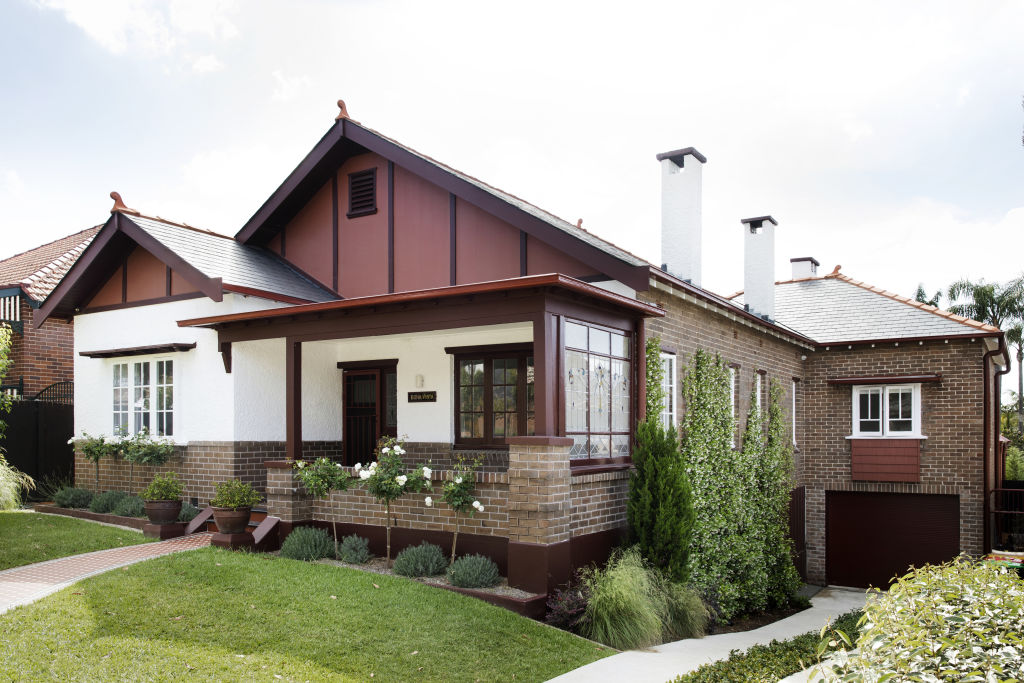
Prineas’s first task was to reinvigorate the original floor plan, including correcting the dog-legged corridor and adding elements like a walk-in wardrobe, en suite and study area. While preserving the original fireplaces, she found divine inspiration. “Always look for something you love in the original house and make it a spring broad for the new addition,” she suggests. “We loved the original fireplace’s threshold of tiny terracotta tiles, which we repeated in the extension.”
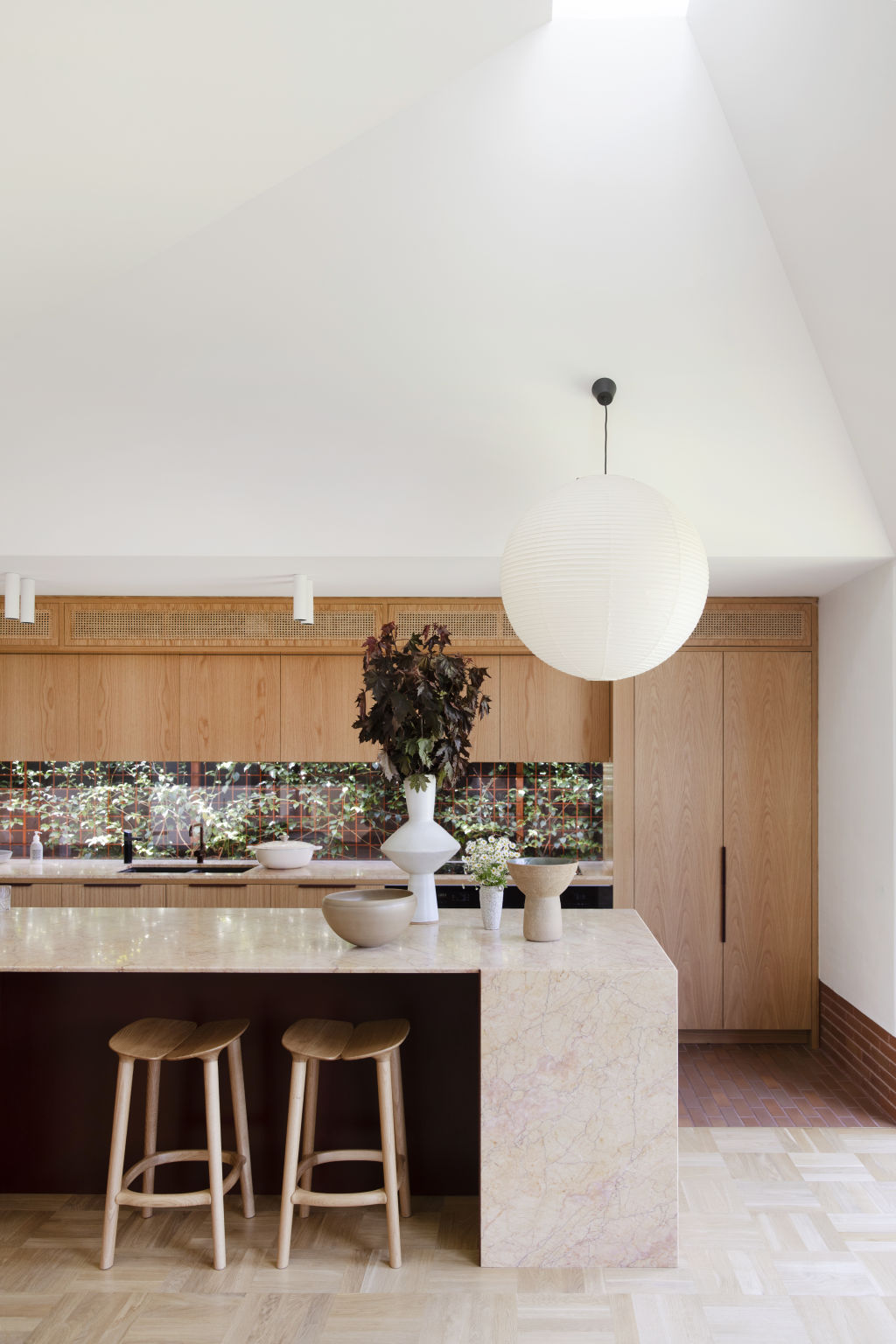
Oak floorboards were laid in the original house, and oak parquetry laid the foundations in the extension where its double brick walls were bagged to ensure it would read differently from the original house. Other internal walls were painted a crisp white and paired with Tasmanian oak providing softness and light.
Meticulous joinery defines the living areas, including a chic sunken banquette lounge for tailored living. “Built-ins maximise space in an open-plan layout as you are borrowing space from one spot and adding to another,” she explains.
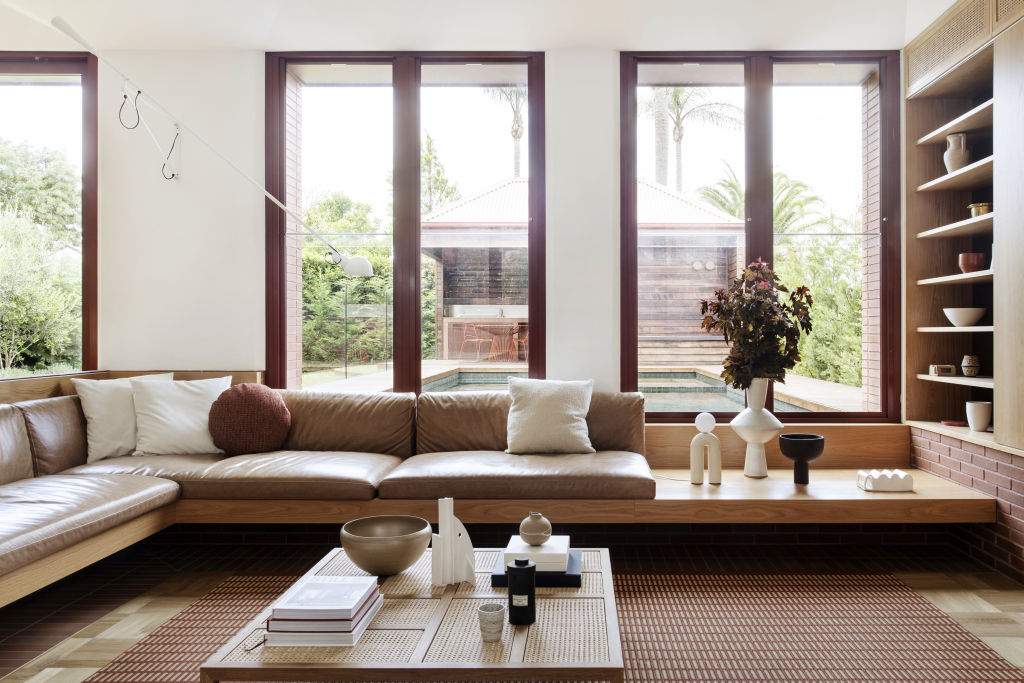
The traditional manor red roof was refreshed with slim line bricks. The two rooflines follow the home’s original pitch with a slightly different internal ceiling that conceals skylights creating diffused light for ambient lofty spaces beneath.
At the rear of the property is the cherry on the cake – a swimming pool with a little cabana comprising a covered barbecuing area, a spot for a day bed, and a bathroom, making it the ideal home for modern Australian family life.
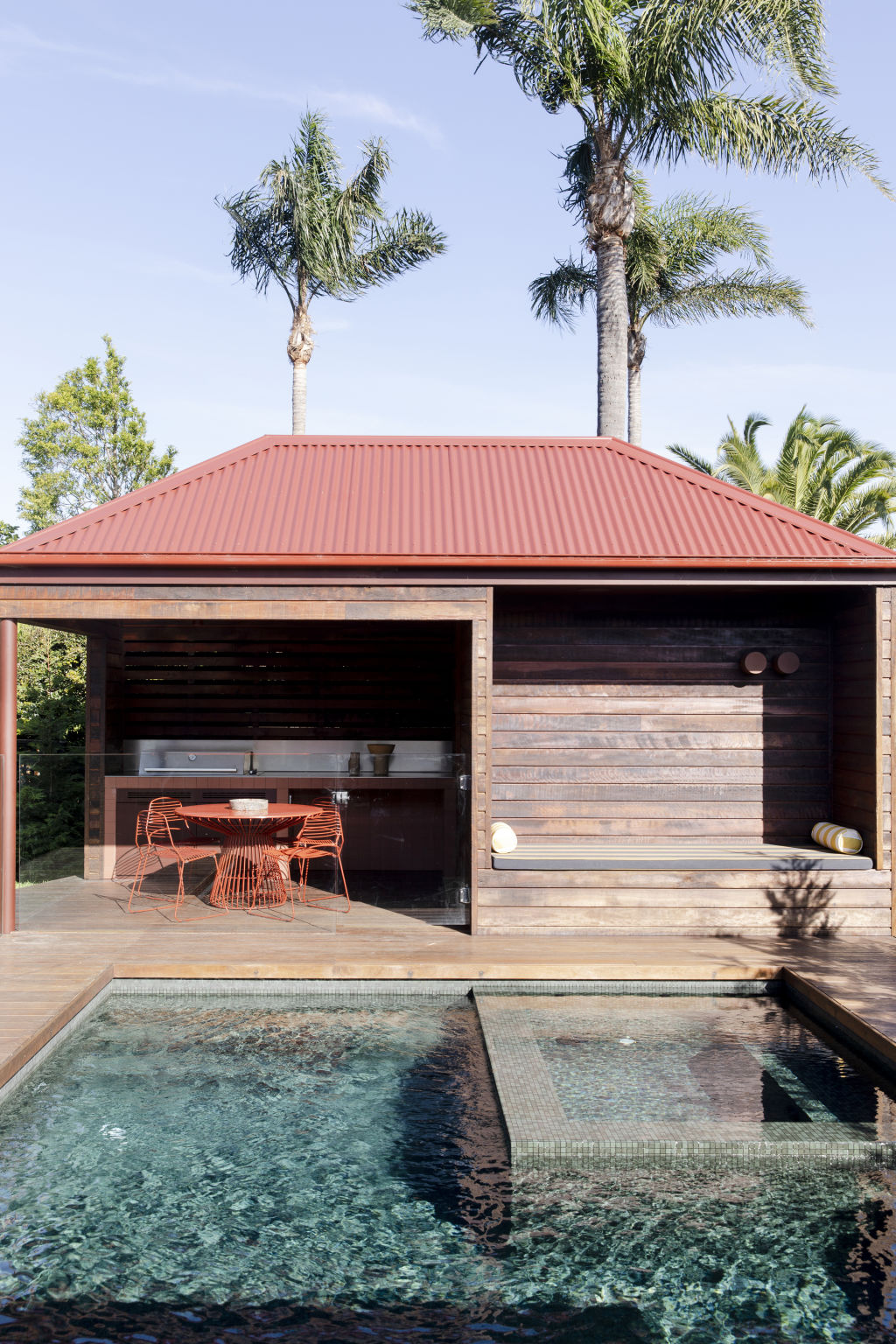
Hermon House
Located in Melbourne’s Hawthorn, Hermon House celebrates the renaissance of a beautiful red-brick Federation home and its 1990s faux heritage addition.
“As a beautiful house in a glamorous street, the owners could see the value in retaining as much of it as possible,” says Monique Woodward of Wowowa Architecture. “There’s nothing more sustainable than reworking what exists.”
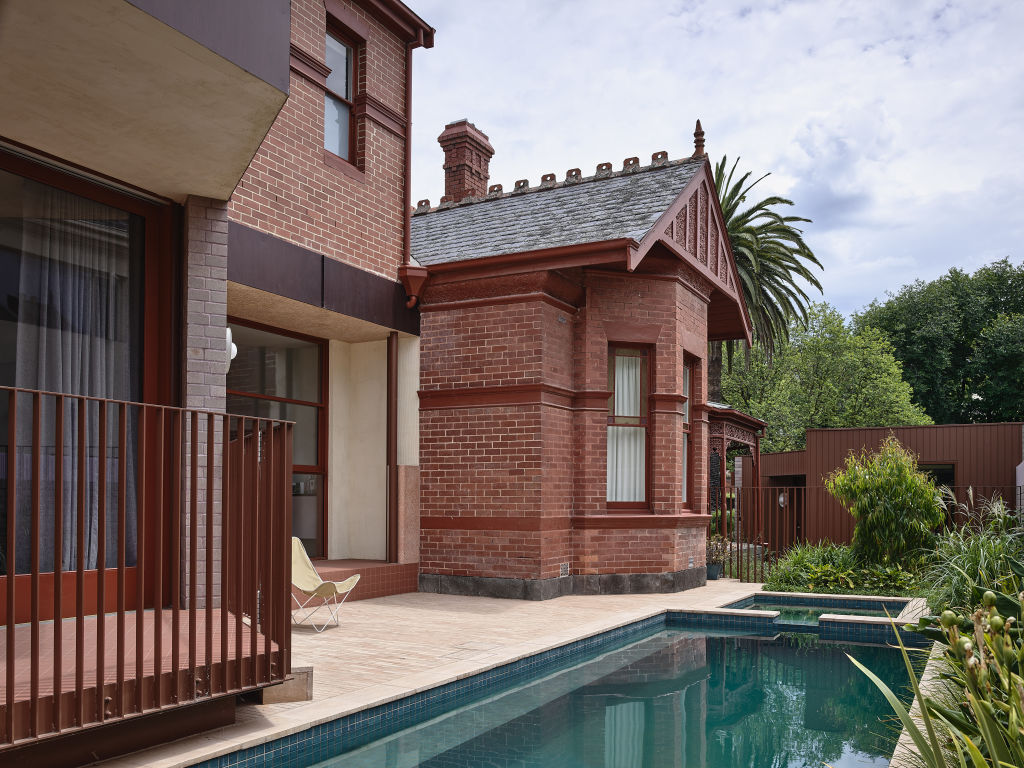
Working within the original footprint and prior renovation, Woodward blended eras, demolishing the internal spaces and rejigging and redefining them to create breezy open living areas.
The new kitchen is a melee of coloured Laminex cabinetry, powder-coloured steel, paving, and terrazzo. Its hero is the cement prep bench, poured in situ and polished to a satin lustre. It doubles as an eating area with a similarly curved bench. Behind the kitchen, is a large pantry, laundry and butler’s pantry that cater beautifully for entertaining.
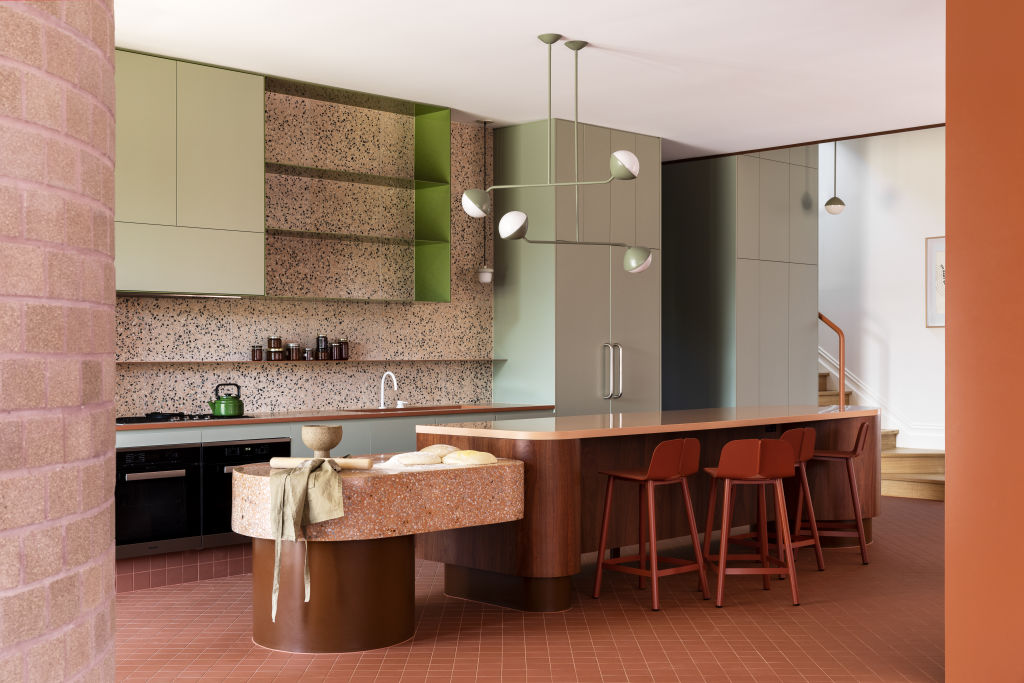
The double-brick walls, remants from the ’90s renovation, worked well from a thermal perspective but were slightly odd in style. “By colour blocking them in a russet red colour, we meshed the old with the new so you focus more on the new contemporary addition,” she says.
The owners wanted an “Australiana” home filled with “glamorous yet humble” materials. The solution was an unlikely palette that is the jumping-off point for a truly unique renovation.
“We advocate for clients to be playful, and our job is to land that palette,” she says.
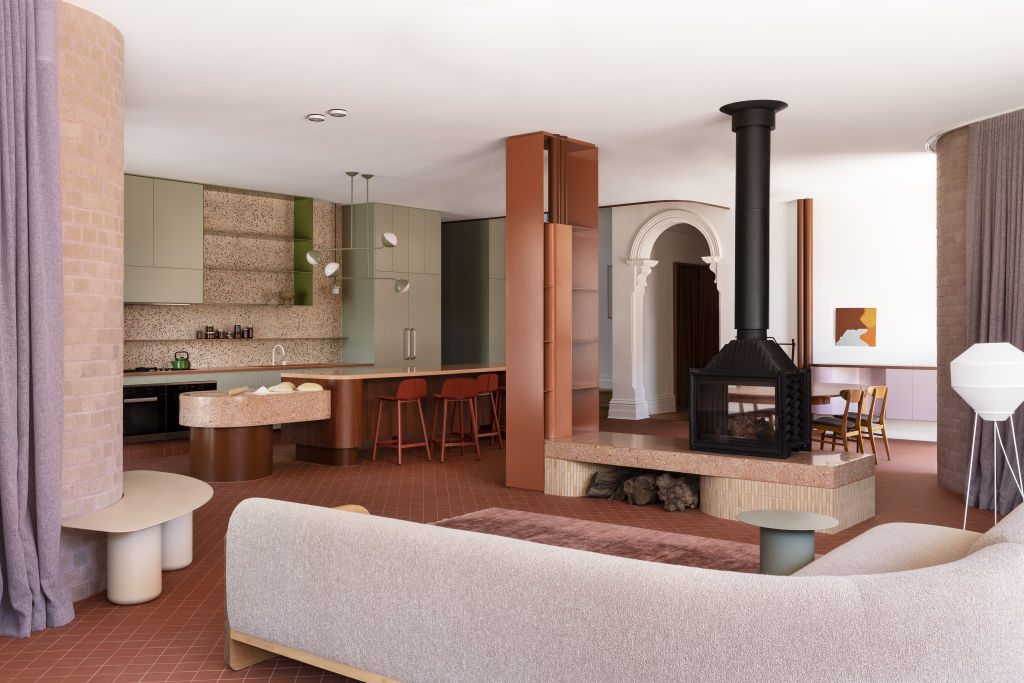
A combination of terrazzo, avocado powder-coated steel, grey bluestone, rust-coloured detailing, concrete masonry with lilac mortar, and spotted gum veneer joinery imbues vibrance throughout. A favourite element of Woodward’s is the diagonally laid terracotta floor tiles that roll from inside to out, reminding you of the home’s ’90s history.
Perforated stairs with a wire mesh balustrade guide you upstairs to the ’90s addition, which now houses the main bedroom suite, additional private spaces, and a rumpus room in the former attic. Joyful graphic patterns are expressed with terrazzo, terracotta, vibrant finger tiles, timber and steel.
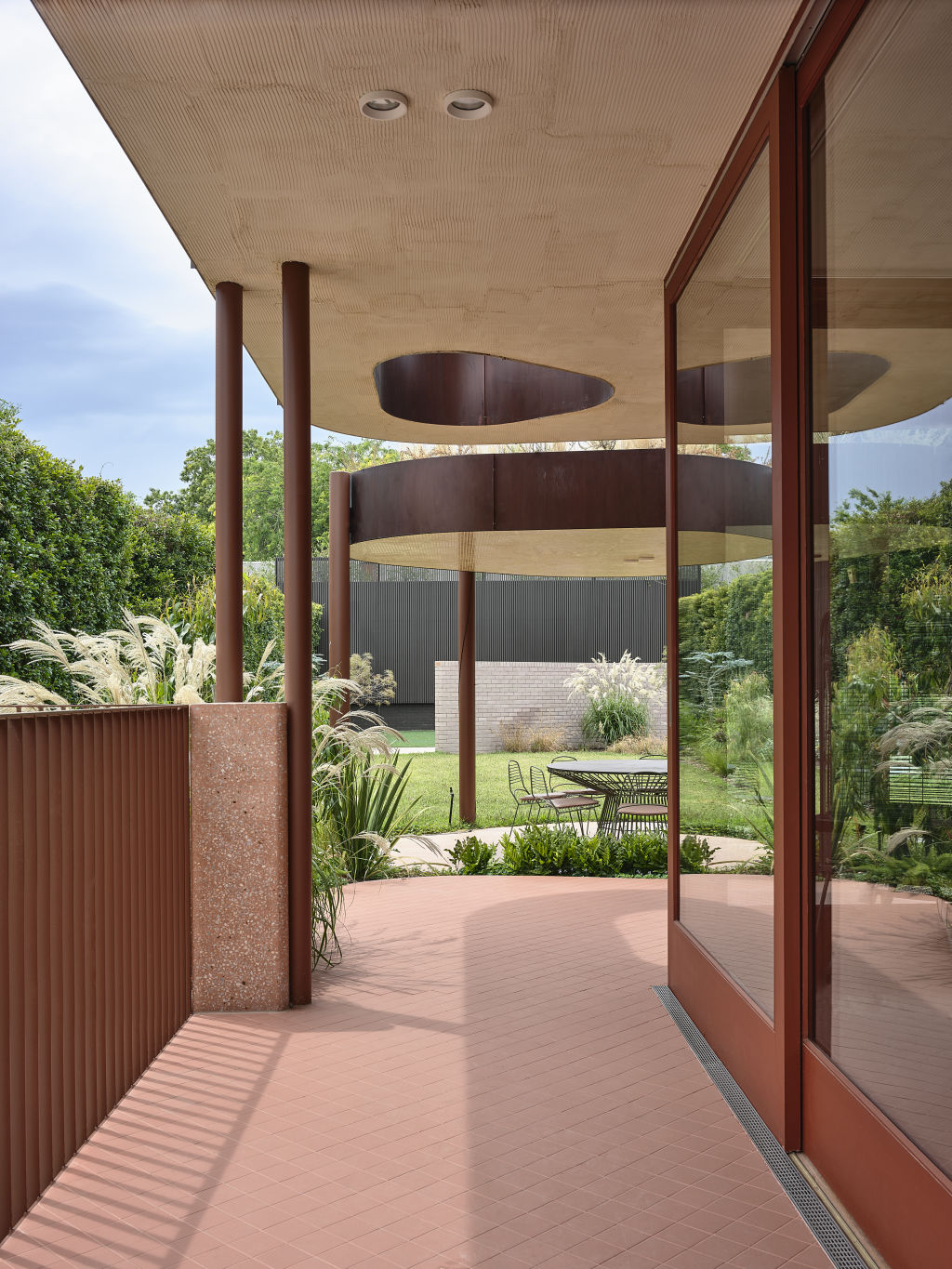
Instead of extending outside, a separate pavilion forms a “permanent umbrella” for the family to enjoy seamless indoor and outdoor living. “It’s a beautiful and unique take on al fresco,” says Woodward. The lush garden is productive and includes Australian natives and roaming chickens, while above, rooftop gardens ensure every window enjoys a leafy outlook.
We recommend
We thought you might like
States
Capital Cities
Capital Cities - Rentals
Popular Areas
Allhomes
More
- © 2025, CoStar Group Inc.
